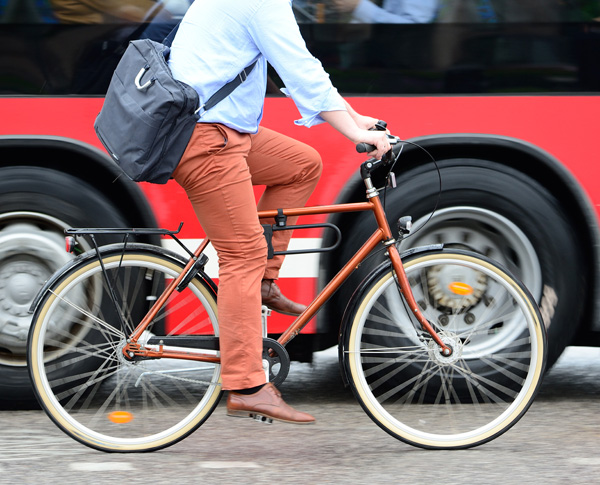Evaluation of innovative cycling infrastructure
Summary
We were commissioned by Transport for London (TfL) to conduct off street trials of a range of innovative types of cycle infrastructure as part of the Mayor of London’s policy to increase the uptake and safety of cycling in London. Our findings helped TfL prepare to implement these techniques on London’s streets and informed its guidance on highway design.
The Challenge
Our task was to develop experimental methods for testing six different types of innovative highway infrastructure and then conduct trials on them with members of the public. Most of these facilities had not previously been used on the UK road network, so would not be familiar to participants. In some cases they require users to behave differently from how they might expect to on traditionally designed roads. As the trials were intended to gather evidence in preparation for on-road implementation, we had to make them as realistic as possible while ensuring that participants were safe.
Our Approach
Working closely with TfL’s technical staff, the TRL team of 150 expert researchers developed trial versions of the different highway facilities on TRL’s test track and in its driving simulator. This included a full scale ‘Dutch style’ roundabout with various entry treatments to test out options. A cycling simulator was also developed.
Over 130 days of trials were conducted using 6,250 members of the public - the largest programme of trials ever held at TRL. We used a mix of observational techniques, focus groups and questionnaires at our simulators and off road tracks. A specialist team worked to understand how facilities could affect people with impaired vision or mobility.
The Results
Our extensive study created a great insight into how the new designs would perform in the real world, giving TfL confidence and regulatory approval to implement many of the facilities across the capital. The findings also informed TfL’s updated London Cycle Design Standards.
Following implementation in London we were commissioned to monitor the effect and behaviour of road users using the new infrastructure. This work and the knowledge we’ve developed continues to inform and advise other similar schemes across the UK.
The full set of reports is here:
PPR703 - Trials of segregation set-back at side roads Overview report and recommendations
PPR703 - Trials of segregation set-back at side roads - Annex 1 Review of existing guidance
PPR703 - Trials of segregation set-back at side roads - Annex 3 Trial M2 with car drivers and cyclists
PPR703 - Trials of segregation set-back at side roads - Annex 4 Trail M4 with car drivers turning into and out of the side road
PPR703 - Trials of segregation set-back at side roads - Annex 5 Trials M13 with car drivers using a driving simulator
Summary of PPR703 - Segregated cycle lanes and tracks at priority junctions
PPR704 - TfL Cycle Facility Trials Alternative Separation Methods for Cycle Lanes
Summary of PPR704 - Alternative separation methods for cycle lanes
PPR705 - Tachistoscopic testing of different markings through a cyclist priority junction
Summary of PPR705 - Testing of different cycle lane marking through a priority junction
PPR711 - Cycle regulations review - final report
PPR715 - High level signals with a red cycle aspect
Summary of PPR715 - High level cycle signals trial
PPR716 - Literature review looking at Dutch style signalised junctions
Summary of PPR716 - Fully segregated signalised junctions
PPR717 - Literature review considering ways for cyclists to turn right at signalised junctions
Summary of PPR717 - Cyclists turning right at signalised junctions
PPR730 - Off-street trials of a bus stop bypass
PPR730 - Off-street trials of a bus stop bypass Appendices
Summary of PPR730 - Off-street trials of a bus stop bypass
PPR732 - Low Level Cycle Signals used as repeaters of the main traffic signals
PPR732 - Low Level Cycle Signals used as repeaters of the main traffic signals Appendices
PPR733 - Low Level Cycle Signals with an early release
PPR733 - Low Level Cycle Signals with an early release Appendices
PPR734 - Low Level Cycle Signals on a separate pole to the main traffic signals
PPR734 - Low Level Cycle Signals on a separate pole to the main traffic signals Appendices.
PPR735 - Low Level Cycle Signals with different cycle reservoir depths
PPR735 - Low Level Cycle Signals with different cycle reservoir depths Appendices
PPR751 - Dutch roundabout safety report Appendices
Summary of PPR715 - Dutch roundabout safety report
PPR752 - Dutch style roundabout capacity report
Summary of PPR752 - Dutch style roundabout capacity

